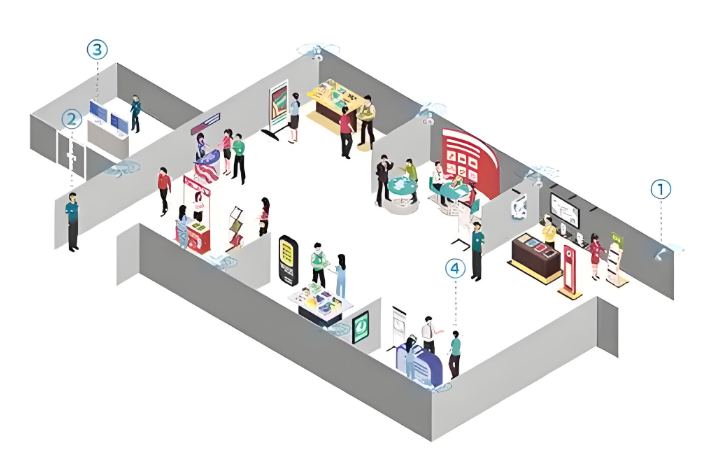In the field of positioning technology, AOD (Angle of Departure) and AOA (Angle of Arrival) are two important positioning methods based on angle measurement. They have many differences in principles, application scenarios, and technical implementation. A deep understanding of these differences will help us choose the most appropriate technical solution under different positioning requirements.

Principle difference: signal direction and positioning logic
The core difference between AOD and AOA lies in the definition and calculation logic of signal direction. The principle of AOD is the direction in which the signal is emitted from the sending device (such as a positioning base station). Taking Bluetooth AOD as an example, a device (base station) with an array antenna transmits a signal to a single antenna terminal, and the receiving terminal calculates the direction of the wave through the received signal to achieve positioning. This technology is often used in outdoor positioning, satellite positioning and other fields, and its positioning process focuses more on building a positioning model from the perspective of the sender.
AOA is the direction in which the signal reaches the receiving device. The basic principle of AOA positioning is that the tag transmits wireless signals to the positioning base station. The antenna array in the positioning base station receives wireless signals from the same signal source at different time points. By analyzing the arrival time difference, the positioning algorithm embedded in the positioning base station is used to calculate the azimuth and elevation angle of the tag to the positioning base station. Then, with the signal strength estimation, the target is accurately positioned in two dimensions (more than two positioning base stations can perform spatial positioning on the same target). AOA is more commonly used in indoor positioning scenarios, and positioning is achieved through the perception of the signal arrival angle at the receiving end.
Application scenario differences: focus on indoor and outdoor positioning
AOD and AOA have obvious differences in application scenarios. AOD is more suitable for outdoor positioning scenarios due to the characteristics of its signal transmission direction. In open outdoor environments, applications such as satellite positioning require accurate signal transmission direction information, and AOD can meet this demand. For example, in wide-area logistics transportation vehicle tracking, AOD technology can achieve accurate positioning of vehicle positions to ensure the safety and efficiency of cargo transportation.
AOA performs well in the field of indoor positioning. The indoor environment is complex, with a large number of obstacles and multipath effects. AOA technology can effectively cope with these challenges by accurately measuring the angle of arrival of signals. In hospitals, medical staff can quickly find the medical equipment they need through AOA positioning technology, which greatly saves time and improves work efficiency; in large shopping malls, customers can use AOA technology to obtain accurate indoor navigation information and easily find the store they want to go to.
Technical implementation differences: antenna configuration and data processing
In terms of technical implementation, AOD and AOA are also significantly different. AOD usually requires a device with an array antenna to transmit signals, and has high hardware requirements on the transmitting end. When designing AOD, the distance between the center points of the two antennas in the array antenna is generally half a wavelength. Therefore, the lower the frequency, the larger the array antenna will be, and the higher the frequency, the smaller the array antenna (with the same number of antennas). This hardware configuration enables AOD to better control the directionality of the signal during signal transmission.
AOA needs to set up directional antennas or array antennas at more than two locations to obtain the angle information of the radio wave signal transmitted by the terminal, and then estimate the location of the terminal through the intersection method. It only needs two antenna arrays to complete the initial positioning of the target. Compared with the positioning system of TDOA and other technologies, the system structure is simple, but the antenna array is required to have high sensitivity and high spatial resolution. In data processing, AOA needs to use complex algorithms to analyze the signal arrival time difference to accurately calculate the position of the target.
As two positioning technologies based on angle measurement, AOD and AOA have their own characteristics in principle, application scenarios and technical implementation. In practical applications, we need to choose the appropriate technical solution according to the specific positioning requirements and environmental conditions. For example, in outdoor positioning scenarios, AOD may have more advantages; while in indoor positioning scenarios, AOA is more applicable.